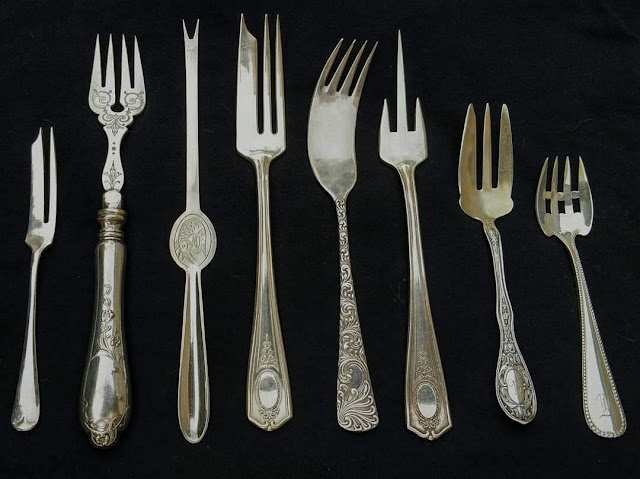Questioning the Fork:
The Origins of This Very Useful Article and Why it Replaced Eating From Knives
It is a matter of history that knives played an important part in domestic life long before forks were invented, and that when first the latter implements appeared, it was considered a mark of effeminacy or ultra refinement to use them. To such a degree was this prejudice against them indulged in France, that in the Sixteenth century the use of forks was considered sinful in monasteries, and the monks split up into two parties on the question. Forks originally came into use to save the fingers from soiling, and Italy was the first place where they were used. Ben Jonson writes of “the laudable use of forks brought into custom here as they are in Italy, to the sparing of napkins.” Some time later, a writer praises the King of Hungary for eating without a fork without soiling his clothes. An old writer explains why the Italian used the fork by saying that he could not “endure to have his dish touched with his fingers, seeing that all men's fingers are not clean alike.”
But the fork was originally, and up to very modern times, used only to hold meat and other pieces of food, while the knife was cutting them. The putting of it into the mouth instead of the knife was only an afterthought, due probably to the unclean appearance of the knife blade after it had been used to shovel into the mouth, gravies, egg yolks, acids, etc... For this reason, silver forks were made; they are cleaner than iron and steel forks. Every step, then, from the original use of the fork as a substitute for the fingers, to its more extended use a substitute for the knife, together with the employment of silver in place of iron, has been dictated by cleanliness. —Good Housekeeping, 1880
Etiquette Enthusiast, Maura J Graber, is the Site Editor for the Etiquipedia©️ Etiquette Encyclopedia

No comments:
Post a Comment
Note: Only a member of this blog may post a comment.